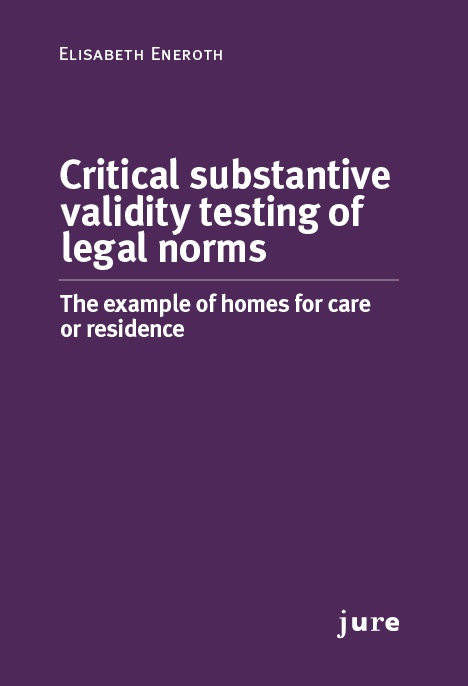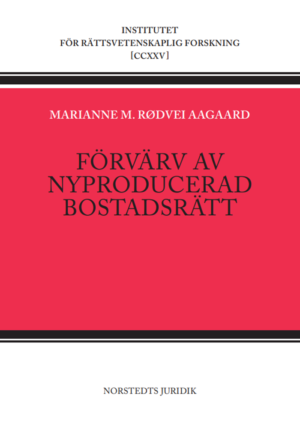
Critical substantive validity testing of legal norms – The example of homes for care or residence
Critical substantive validity testing of legal norms – The example of homes for care or residence
The legal analytical tool provides a procedure for performing an internal criticism of the law within legal science. It is a conversion of Kaarlo Tuori’s critical legal positivism and his conception of legal validity (Critical Legal Positivism, 2002) into practical use in legal phi-losophy. It is also a conversion of Jürgen Habermas’ method rational reconstruction (“What is Universal Pragmatics?” in Communication and the Evolution of Society, 1979) into practical use in legal philosophy. This is, in turn, done through elaboration of method tools: analysis of the structure of an argument, reconstruction and linguistic sub(competence). Focus is on the unification of theory and method for performance of critical substantive validity testing of a legal norm within a certain legal order.
This book is arranged as a description of the performance of an explorative research process in legal science from start to finish.
The chapters deal with elaboration of the legal starting points, the legal scientific starting points and the method tools of which the legal analytical tool is composed.
Chapter 1 deals with critical substantive validity testing of legal norms. Chapter 2 deals with legal starting points. Chapter 3 deals with legal scientific starting points. Chapter 4 deals with method tools. Chapter 5 deals with the legal analytical tool in its entirety. Chapter 6 deals with the application of the legal analytical tool to the example of homes for care or residence. Chapter 7 deals with future research. This book is intended for use in legal education and legal scientific research.






